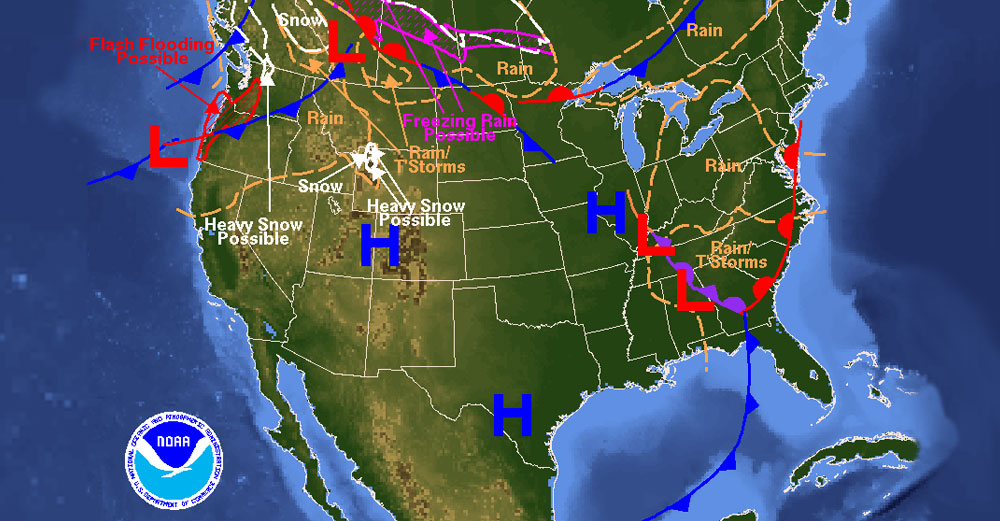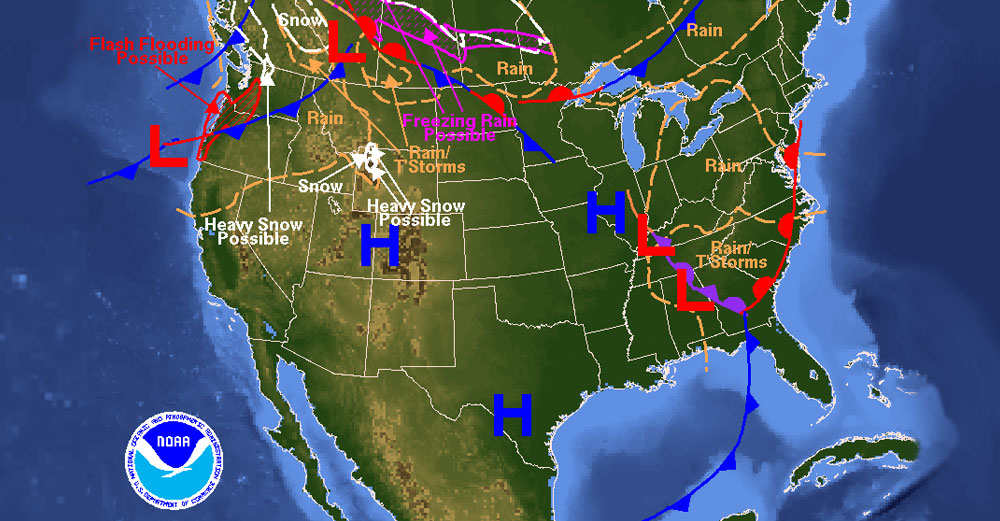
This winter has been one to remember! The average temperature for February ranged from 9.0 to 10.9 degrees in New York, which is 15 degrees below normal winters we are used to. The State of New York has received such large amounts of snow and cold in the month of February, it was difficult to keep up. Just in Syracuse alone, there was over 48.5 inches of snow, which exceeds the amount of snow that had fallen in November, December and January combined. The number was also nearly double the February average of 25.3 inches.
We turn to meteorologists to help us prepare for weather patterns like the ones we experienced in February. If they predict 2 feet of snow, will we get it, or will it only be 2 inches? Weather prediction is not as easy as it looks! When you’re being notified by your mobile device alerts or weather channels regard this week’s temperatures, there are many important aspects that serve as contributing components of how a meteorologist predicts the weather forecast.
A meteorologist follows a process which they coordinate on a daily basis as they utilize a few prediction models that helps them reach their conclusion on what forecast the public will be exposed to. In an effort to get a better understanding of the important duties of a meteorologist, we interviewed Scott Steiger, Associate Professor of Meteorology & Director, Lake Effect Storm Prediction and Research Center at SUNY Oswego:
So Scott, what does a meteorologist do exactly?
Meteorologists have careers that vary from forecasting for the federal government (National Weather Service) to forecasting for private companies (e.g., energy producers). They can also be on TV and do research on topics like climate change.
Where is the forecast information being retrieved from?
We obtain information about observations and numerical computer simulations from a variety of sources, but most data are collected and disseminated by the federal government.
What are some of the steps that are taken by a Meteorologists when their in the process of predicting snow during the winter season?
They first need to look at current and past conditions associated with an approaching storm. They then look at computer model guidance and assess how accurate the models are doing. It is also important to determine what kind of snow storm will occur (e.g., Nor’easter vs. lake-effect) as there are different methodologies used to forecast each.
What are the different models that are used to analyze and predict the weather and how are they utilized?
There are several. Some only forecast out to a few days while others forecast out on a monthly timescale. Some I like to use include the U.S.’s NAM, GFS, and RAP models and the European ECMWF model. We use these models as guidance to our forecast, not as the “end-all-be-all!” Models can be wrong a lot and it is a skill for a meteorologist to know when to trust a model or not.
So next time you get upset at an upcoming forecast, remember the amount of work that goes into the science of meteorology. It’s not just a guessing game!




